FRANCIS LIBIRAN Baby Pink Draped Tulle Dress, CHEETAH RIVERA Orange Bow Top, Beige Tiered Ruffled Skirt
Koji Arboleda
FRANCIS LIBIRAN Baby Pink Draped Tulle Dress, CHEETAH RIVERA Orange Bow Top, Beige Tiered Ruffled Skirt
Koji Arboleda
Here is an exclusive rundown of the concept and fashion behind Vogue Philippines’ October cover shoot, Ginhawa.
To some, the Filipino concept, ginhawa, is a state of mind. To others, it’s the breath of life. To few, it’s the freeing sentiment of having your head in the clouds. The feeling of ginhawa comes in many forms—emotional stability, unity, financial security, and the presence of loved ones.
To arrive at that liberating feeling, one must undergo a personal journey of tension, action, and release. InVogue Philippines’ October cover shoot, the team translates the emotions and feeling of this Filipino concept into a multi-layered fantastical visual story. The fashion of ginhawa is a narrative that moves beyond mere images; it’s a tale of collaboration and converging personal journeys. With lighting designer John Batalla, photographer Koji Arboleda, cover girl Ica Dy, and Ballet Philippines dancers Maisie Briones and Paloma Laforteza providing their own perspective of the search for the elusive calm, Ginhawa becomes a story for the people.
Our Ginhawa cover story comprised of an inimitable roster of pieces that can be defined in one word: dynamic. The designers found within the vivid shoot were highly evocative of the meaning behind the feature: a story of collaboration, movement, and self-expression. With light-as-air pieces, passion and fluidity took centerstage with intricate pieces from Francis Libiran, Viviano Studio, Cheetah Rivera, Vilrique, Maticevski, and Carolina Herrera.
All phases of the process are illustrated in three distinct parts. What compelled Vogue Philippines to explore this notion is how each and every individual deals with challenges in life. It’s a story that resonates with us all. Fluidity and movement encompasses the entire cover shoot, revealing the deeper values of mental health. Creativity, passion, and empathy anchor the shoot with floaty frocks and airy garments in tow. Below, we lift the curtain and reveal the story behind the Ginhawa cover shoot—a fashionable voyage to freedom.
Act I: What Is Lost Will Always Be Found
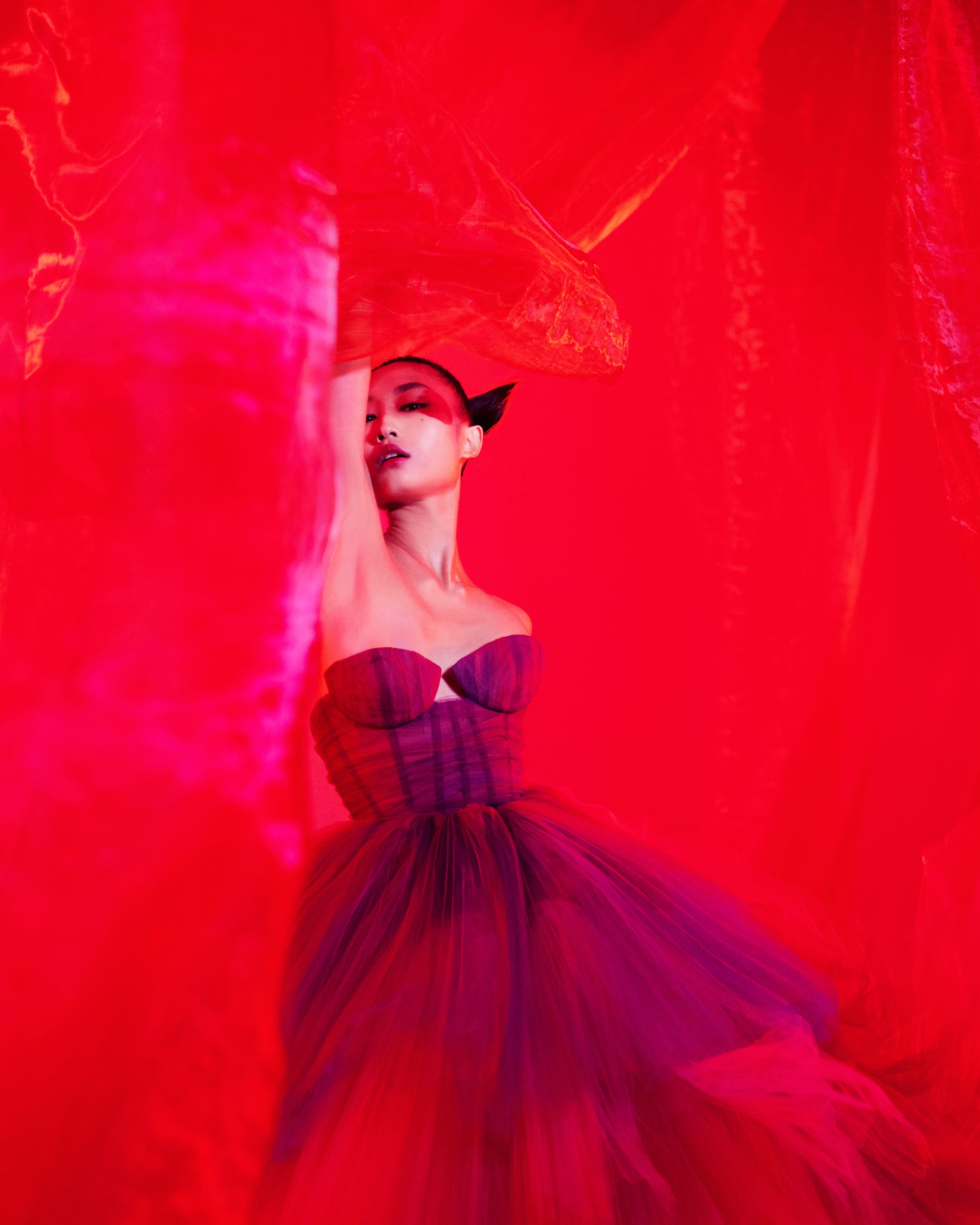
To achieve serenity, one must always begin with intention. A charged emotional state incites change and will eventually cause one to break free. The first chapter can be summarized in one phrase: scarlet fever. This fiery phase is inspired by the 1977 Italian supernatural horror film, Suspiria, directed by Dario Argento, a film that demonstrates the fury within an all-female world. For Vogue Philippines, it embodies the assertion of feminist power and female liberation. In red and black pieces, tension is teased out of the cover shoot. A Maticevski chanson cape kicks off the cover shoot with plenty of gravity-defying layers. The black draped number with cascading pleats demonstrates the beauty of movement during this feverish phase. Another highlight within this act is the pleated dress by Vania Romoff. Its voluminous balloon sleeves brought the dramatic edge needed for the intensity within this chapter.

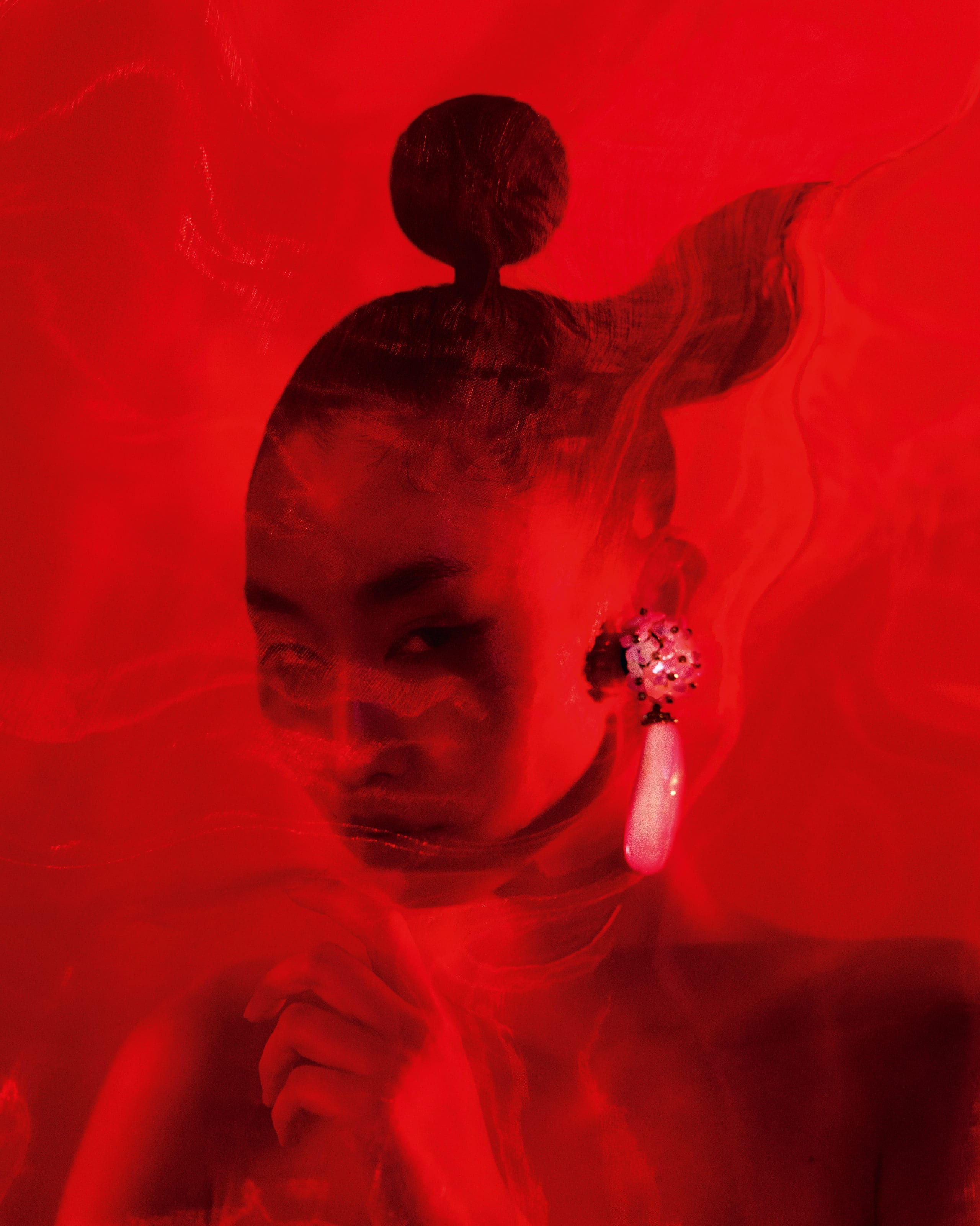
Act II: Catch Your Breath, Dance In The Dark

In Act II, we delve into the darkness. With neutral pieces in white and beige hues, cover girl Dy and dancers Briones and Laforteza encompass the spark within the darkness. A sheer beige ruffled dress by Romoff is juxtaposed with the veil of darkness. A vision of frills and stark simplicity, its lengthy train sings with a sense of renewal and creates a beautiful silhouette. The Noir Kei Ninomiya neon green tulle dress takes style cues from punk fashion, paired with a metal-zipped cropped jacket and a safety pin dress. A symbol of rebellion only felt appropriate within the absence of light.
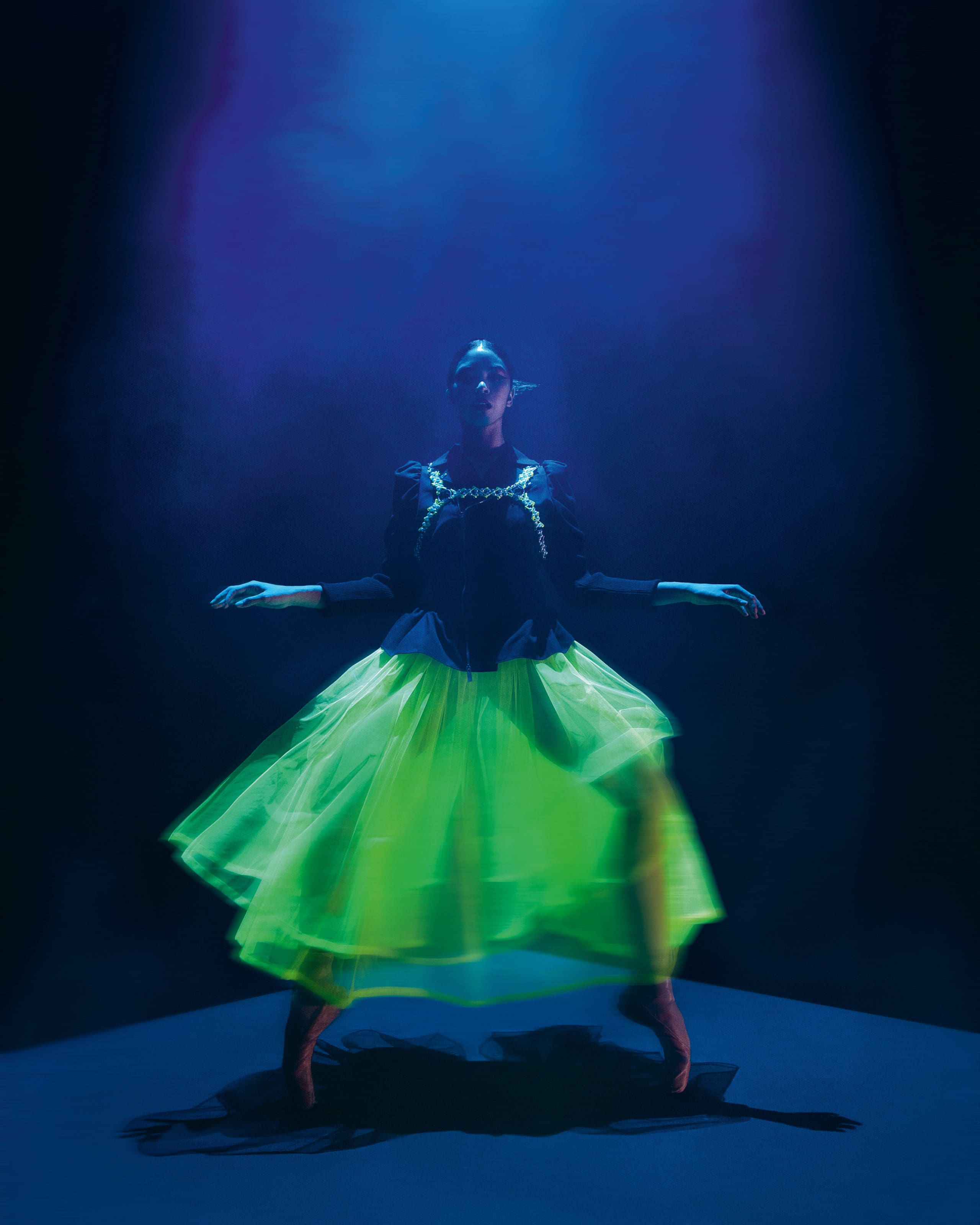
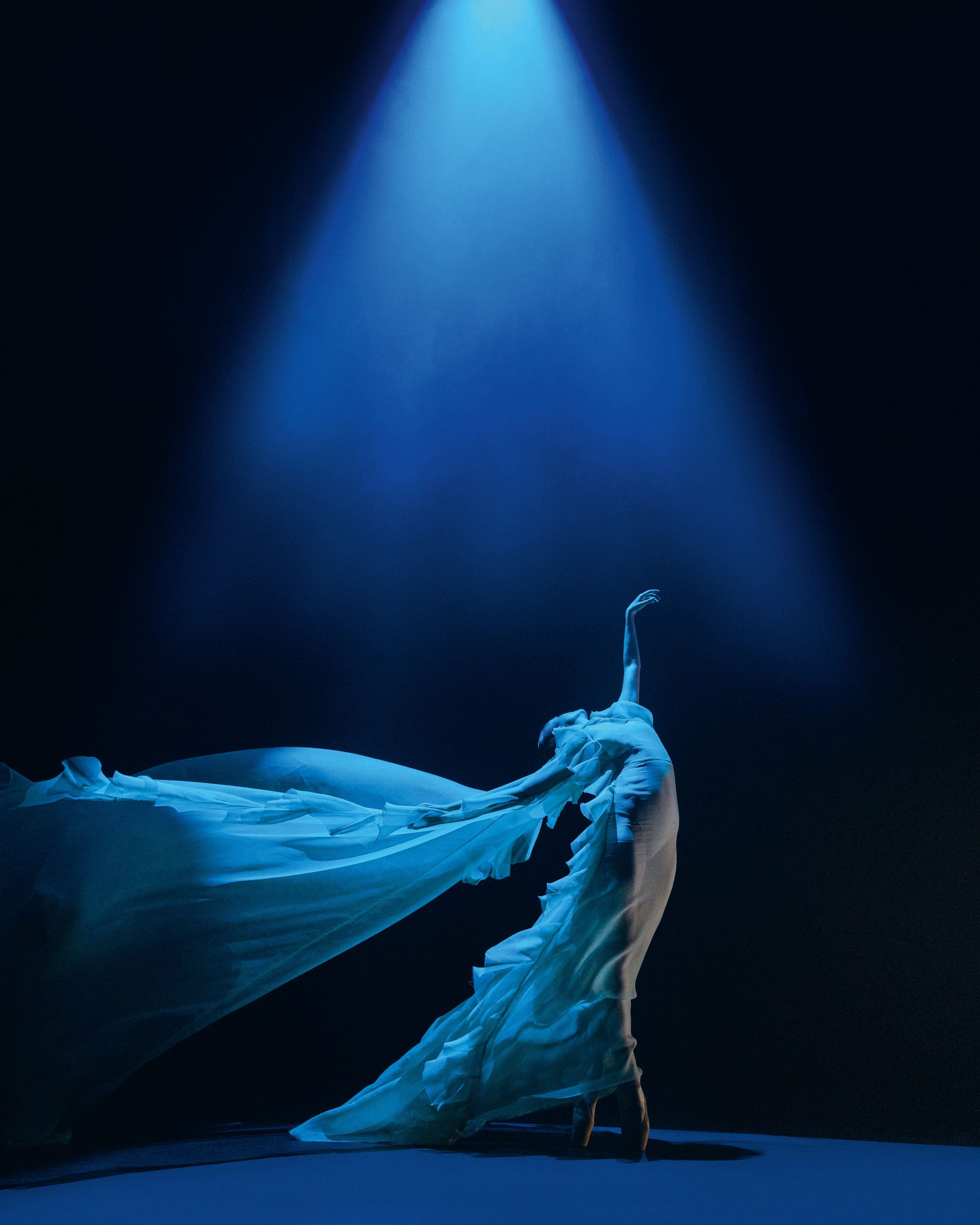
Act III: Peace of Mind

The final chapter is a sense of relief, a paradisiacal state of mind imbued with color. It’s essentially the pinnacle of the lightness of being—a state of utter contentment. To convey this solace, there was an injection of color that shone through Francis Libiran’s tiered pleated tulle dress.
“The dress by Francis Libiran represented the emotion and the poetry of Ginhawa well and beautifully underscored by the lighting of John Batalla, and painstakingly captured by Koji Arboleda. Everything about this shoot came together seamlessly and this dress demonstrates that”, says Quiñones. With layers of pleats in a soft tulle, Libiran’s dress brought a dramatic, ethereal look to the story.
Viviano Studio’s printed coat with a pastel tulle dress brought plenty of volume and created its own outlandish shape and form. Cheetah Rivera’s bow top and beige tiered ruffled skirt (derived from our inaugural issue’s “Made-to-Measure” feature) suggests that one can repeat clothes without skimping on the glamour. Quiñones says, “I wanted the readers to discover it for themselves. This set was used in the Made-to-Measure feature in our first issue.”
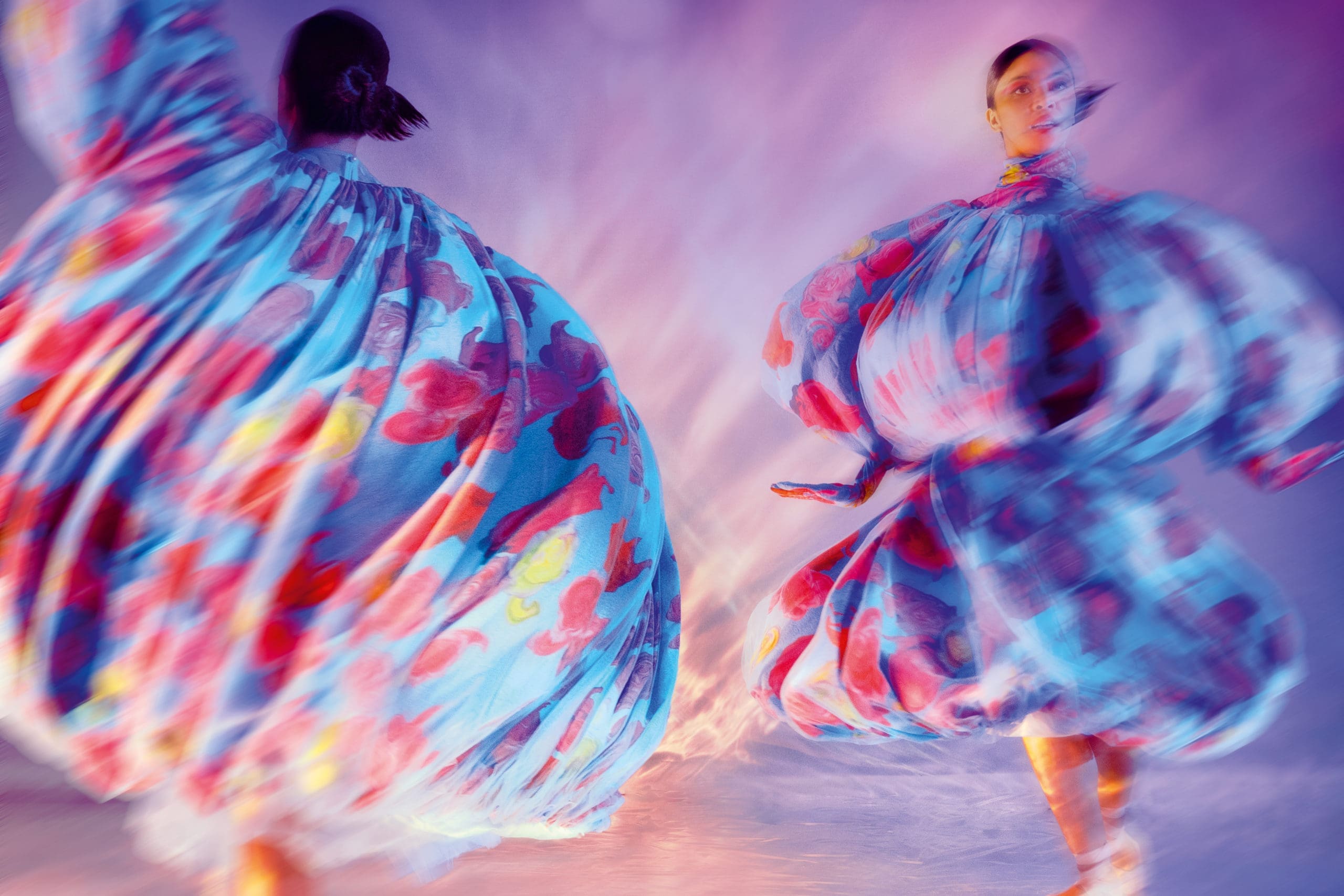
Vilrique’s bustier can be likened to a stiff form of sculpture with intricate creases and unconventional contours, creating a windswept effect. Quiñones remarks, “The bustier by Vilrique is a stiff form of sculpture. I love the deep creases. The way it’s shaped suggests that the wind had blown it into its form and created the creases. It’s injecting the idea of movement within its environment. It upends movement in a way because it’s stiff, but it’s more of a suggestion of Ginhawa itself.” This interesting comparison hinted at the overarching theme of fluidity in various forms.
The Carolina Herrera mullet dress with a degradé of fuschia and red is a light explosion of tulle—a statement-making highlight and a mainstay of the cover shoot.
Quinones concludes, “As you can see, everything comes together in this union of emotion, body, beauty, wellness, time and state of mind. These are the elements that make up our October issue.”
Photographer: Koji Arboleda, Lighting Designer: John Batalla, Fashion Director: Pam Quiñones, Makeup Artist: Janell Capuchino, Hairstylist: Mong Amado, Nails: Extraordinail, Models: Ica Dy, Maisie Briones, and Paloma Laforteza, Producer: Anz Hizon, Fashion Associate: Renee De Guzman, Assistant Photographer: Gab Villareal, Assistant Lighting Designer: Anthony Opeda, Lighting & Technical Team: Raymund Denaga, Jomar Trinilla, Marvin Jalbuena, Jovy Delantar, Genesis Berry, and Ronald Gutierrez, Production Design Team: Miguel Alomajan, Rey John Legaspi, CJ Garcia, Jheno Sonio, Kenneth Vence Murillo, Miguel Timbol, and Ernesto Legtan of Rocket Designs
